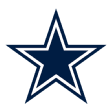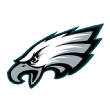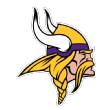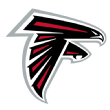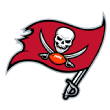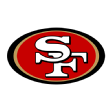Draft guides for all 32 NFL teams
Football OutsidersESPN INSIDER
Below, Football Outsiders takes a look at the biggest need positions for all 32 teams going into the NFL draft. Each team is listed with its biggest need, a lesser-known need, and a position where there's no need at all.Many of the descriptions reference Football Outsiders stats which are explained here. The most common is DVOA, or defense-adjusted value over average, which compares every play of the NFL season to a league average and adjusts based on situation and opponent.
AFC EastBy Rivers McCown
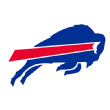 Buffalo Bills
Buffalo BillsBiggest need: Quarterback
AJ McCarron is a downgrade from Tyrod Taylor, and Nathan Peterman isn't assured a roster spot at this point. The Bills spent all offseason building up a ton of draft capital, and then the Jets beat them into the top five. Either via a trade-up or via a selection that bucks draft consensus, look for the Bills to leave the first two rounds with someone they consider their signal-caller of the future. About all we can glean from their current plan is that they want their quarterbacks to be tall.Quiet need: LinebackerThe Bills addressed nose tackle in free agency by bringing in former Panther Star Lotulelei, which is step one toward fixing a defense that finished 31st in run defense DVOA. Next up are the linebackers. Lorenzo Alexander turns 35 in May, and the only other player on the depth chart at linebacker who is a known quantity at this point is journeyman Ramon Humber. It's very possible that, with no talent injection, the players who start alongside Alexander are a late-round pick and an undrafted free agent; not exactly the most reliable combo. It's hard to forecast what the Bills will do since so much of their offseason is about what they do at quarterback, but Sean McDermott's defenses in Carolina invested heavily in coverage, off-ball linebackers.Not a need: Running backBetween LeSean McCoy, Chris Ivory, Travaris Cadet and Patrick DiMarco, the Bills have a steady collection of backs with a versatile combination of skill sets. In an ideal situation, these backs will all be utilized ... as spectators on every McCoy carry.
AJ McCarron is a downgrade from Tyrod Taylor, and Nathan Peterman isn't assured a roster spot at this point. The Bills spent all offseason building up a ton of draft capital, and then the Jets beat them into the top five. Either via a trade-up or via a selection that bucks draft consensus, look for the Bills to leave the first two rounds with someone they consider their signal-caller of the future. About all we can glean from their current plan is that they want their quarterbacks to be tall.Quiet need: LinebackerThe Bills addressed nose tackle in free agency by bringing in former Panther Star Lotulelei, which is step one toward fixing a defense that finished 31st in run defense DVOA. Next up are the linebackers. Lorenzo Alexander turns 35 in May, and the only other player on the depth chart at linebacker who is a known quantity at this point is journeyman Ramon Humber. It's very possible that, with no talent injection, the players who start alongside Alexander are a late-round pick and an undrafted free agent; not exactly the most reliable combo. It's hard to forecast what the Bills will do since so much of their offseason is about what they do at quarterback, but Sean McDermott's defenses in Carolina invested heavily in coverage, off-ball linebackers.Not a need: Running backBetween LeSean McCoy, Chris Ivory, Travaris Cadet and Patrick DiMarco, the Bills have a steady collection of backs with a versatile combination of skill sets. In an ideal situation, these backs will all be utilized ... as spectators on every McCoy carry.
 Miami Dolphins
Miami DolphinsBiggest need: Tight end
Waiver claim A.J. Derby is a serviceable NFL tight end, ideally a No. 2. But MarQueis Gray and Thomas Duarte are not No. 1s, and given how important it is for a modern spread offense to have a tight end that can command attention, it's surprising how little priority the Dolphins have put on the position. Taking a chance on a rookie like Dallas Goedert or Mike Gesicki might give a little extra explosion to an offense that could use someone to create matchup problems.Quiet need: Linebacker2017 second-rounder Raekwon McMillan is coming off an ACL tear. Reclamation project Stephone Anthony was a healthy scratch for much of 2017. The lasting memory of Kiko Alonso was him getting beat in coverage over and over again. On raw talent, this unit could be average to even a little above average next year. On current NFL performance, they're lacking. It would not be surprising if the Dolphins dialed up Tremaine Edmunds or Roquan Smith (if he's around) at 11th overall.Not a need: CornerbackRecent investments in Cordrea Tankersley and Xavien Howard have panned out pretty well, and 2015 fifth-rounder Tony Lippett is coming back off a 2017 season lost to injury. The Dolphins don't seem to have many obvious strengths -- they're a team of solid players without much in the way of star power -- but we would be most surprised if they invested in more corners.
Waiver claim A.J. Derby is a serviceable NFL tight end, ideally a No. 2. But MarQueis Gray and Thomas Duarte are not No. 1s, and given how important it is for a modern spread offense to have a tight end that can command attention, it's surprising how little priority the Dolphins have put on the position. Taking a chance on a rookie like Dallas Goedert or Mike Gesicki might give a little extra explosion to an offense that could use someone to create matchup problems.Quiet need: Linebacker2017 second-rounder Raekwon McMillan is coming off an ACL tear. Reclamation project Stephone Anthony was a healthy scratch for much of 2017. The lasting memory of Kiko Alonso was him getting beat in coverage over and over again. On raw talent, this unit could be average to even a little above average next year. On current NFL performance, they're lacking. It would not be surprising if the Dolphins dialed up Tremaine Edmunds or Roquan Smith (if he's around) at 11th overall.Not a need: CornerbackRecent investments in Cordrea Tankersley and Xavien Howard have panned out pretty well, and 2015 fifth-rounder Tony Lippett is coming back off a 2017 season lost to injury. The Dolphins don't seem to have many obvious strengths -- they're a team of solid players without much in the way of star power -- but we would be most surprised if they invested in more corners.
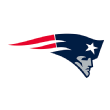 New England Patriots
New England PatriotsBiggest need: Offensive tackleAfter shoring up its defense early in the offseason, New England faces the prospect of heading into training camp with LaAdrian Waddle, Matt Tobin and Antonio Garcia in a competition to guard Tom Brady's blind side. Garcia lost all of his rookie season to blood clots, and though he had talent in spades at Troy, he's an unknown factor for health reasons. This doesn't figure to be a great draft for tackles, but now that the Patriots have some extra first-round ammo they could be heading for Notre Dame's Mike McGlinchey or UCLA's Kolton Miller.Quiet need: Edge rusherOr they could do the exact opposite. The Patriots had an astounding number of coverage sacks last year, and have yet to adequately replace Chandler Jones with a true No. 1 pass-rusher. Derek Rivers, another highly touted rookie who missed his entire first season, and free-agent addition Adrian Clayborn are both worthy stabs at fixing the problem. Somehow being in position to draft Boston College's Harold Landry would solve it in permanent ink. And if they instead have to aim for a second-round player, Florida State's Josh Sweat has shown big on his athleticism scores, and could overcome poor production in college to be a good edge in the pros.Not a need: Defensive backAdding Jason McCourty off a great year in Cleveland to a core that already had his brother Devin McCourty, Stephon Gilmore, Patrick Chung and Duron Harmon gives the Pats more than enough bodies to mix and match coverages however they'd like. As bad as New England's defense was early last season, the pass defense largely solidified after that -- except against the Eagles in the Super Bowl, anyway.
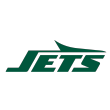 New York Jets
New York JetsBiggest need: QuarterbackNo use in pretending that the Jets traded up to draft something other than a quarterback, right? Offensively, the Jets are in an interesting spot, because last season's pass offense was unexpectedly productive under offensive coordinator John Morton. But they fired Morton, and are hoping Jeremy Bates can recreate the same results. Bates had an uninspiring one-season run as Seahawks offensive coordinator, pre-Russell Wilson, in 2011. A lot can change in seven years, so it's hard to know which of this year's crop of quarterbacks is the best fit for what the Jets want to do. Jets fans would be well-served getting familiar with all of the potential early quarterbacks in this draft -- and then hoping Josh Allen isn't the one they end up with.Quiet need: Offensive lineThe Jets are relying on a ton of scrapheap talent along the offensive line, with left tackle through center all being filled by free agents. Guard Brian Winters is the only player making more than marginal money, and even he's more solid than good. If injuries strike, the Jets could be in big trouble, because trading up for a quarterback has made the depth chart a secondary concern. If they could luck into someone like Arkansas' Frank Ragnow with their third-round pick, they should consider themselves fortunate.Not a need: Wide receiverThe Jets could still use a true No. 1, superstar receiver. But that aside -- they currently have no less than 17 receivers on their roster. The Day 2 and early Day 3 picks of the recent past are stacked on top of the free-agency moves, such as Terrelle Pryor Sr. and Andre Roberts, which are stacked on top of UDFA such as Jalin Marshall and Tre McBride. There's no need for them to be taking a stab at any non-sure things in the draft.
AFC North
By Charles McDonald
 Baltimore Ravens
Baltimore RavensBiggest need: Wide receiverSince their inception over 20 years ago, the Ravens have always struggled to find wide receiver talent. Breshad Perriman looks like another missed receiver draft pick for Ozzie Newsome, and the team has turned to 30-year-old Michael Crabtree to carry the load as the No. 1 receiver. This year's draft class doesn't seem to have bona fide No. 1 receiver options, but there are plenty of players who can boost Baltimore's receiver corps; perhaps Maryland product D.J. Moore?Quiet need: QuarterbackJoe Flacco has been a colossal disappointment since he signed his original contract extension in 2013. He has had a 4,000-yard season only once in his career (2016), and simply hasn't created enough production to make his gargantuan contract hit reasonable for the Ravens. His receiving options have been poor, but even filtering out that context, Flacco's play hasn't been good enough to justify his contract. In a draft with a handful of legitimate quarterback prospects, the Ravens need to consider drafting a replacement (or at least an eventual heir).Not a need: Defensive tackleBaltimore has a diverse group of defensive tackles who can do a bit of everything. Between Brandon Williams, Michael Pierce, Carl Davis, Willie Henry and others, the Ravens have an extremely solid, young core of interior linemen.
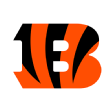 Cincinnati Bengals
Cincinnati BengalsBiggest need: Offensive lineUnsurprisingly, the Bengals really struggled on the offensive line after letting Kevin Zeitler and Andrew Whitworth walk in free agency. They made a splash with their trade for Cordy Glenn, but they still have huge needs at center, right guard and right tackle. As currently constructed, Cincinnati's offensive line could be a huge hindrance toward their 2018 goals.Quiet need: Defensive tackleGeno Atkins is one of the elite defensive tackles in the league, and it's about time the Bengals found him an effective running mate. They signed Chris Baker earlier in the offseason, but after his struggles in Tampa Bay, he can't be counted on to be productive for them. Adding another explosive player next to Atkins is a sneaky priority.Not a need: CornerbackWilliam Jackson III, Dre Kirkpatrick and Darqueze Dennard are a solid cornerback trio. Jackson looks poised to be the best Bengals cornerback since Leon Hall and Johnathan Joseph suited up for the team. Cornerback is low on the list of needs for Cincinnati this year.
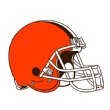 Cleveland Browns
Cleveland BrownsBiggest need: QuarterbackThis is a no-brainer. The Browns have traded every single quarterback on their roster from last year and signed Tyrod Taylor to be a bridge. They have the No. 1 and No. 4 picks in a draft class rich with quarterback talent at the top. Draft your guy, get this thing moving.Quiet need: Defensive tackleThe Browns have a young, talented defensive tackle group, but it doesn't hurt to add another young body in the draft. They traded away Danny Shelton, who played 43.7 percent of the defensive snaps for the Browns last year, so they'll need another talented player to take on some of the snaps that Shelton is leaving behind. With a plethora of picks in the top two rounds, they'll have an opportunity to further bolster what is already a strength.Not a need: Wide receiverJosh Gordon, Jarvis Landry, Corey Coleman. Not a need.
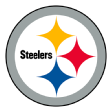 Pittsburgh Steelers
Pittsburgh SteelersBiggest need: Inside linebackersUnfortunately, Ryan Shazier has a long road back to playing football -- if he ever does play again. The Steelers are going to need some speed in the middle of their defense to take over Shazier's spot. This class has some solid linebacker talent at every point in the draft, so they should be able to walk out with a starting-caliber player.Quiet need: Pass-rushersThis one is tricky. The Steelers led the league in sacks and sack rate in 2017, but a lot of their pressure had to be manufactured from players who were neither defensive linemen nor edge rushers. Defensive back Mike Hilton and inside linebacker Vince Williams combined for 12 sacks. Edge rusher Bud Dupree has been a bit underwhelming, so the Steelers might want to bring in competition for him.Not a need: Wide receiverThe Steelers have arguably the best receiver in the league in Antonio Brown, the best rising sophomore receiver in JuJu Smith-Schuster, and an explosive playmaker in Martavis Bryant. Smith-Schuster and Bryant could probably be No. 1 receivers if given the opportunity. Not a need.
AFC South
By Tom Gower
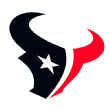 Houston Texans
Houston TexansBiggest need: Offensive tackleAll three Texans quarterbacks, including Deshaun Watson, ranked among the nine most sacked quarterbacks in the league by adjusted sack rate. Improving a shaky offensive tackle situation looked like a priority in free agency, but the Texans lost out on Nate Solder and settled for Seantrel Henderson, who barely played the past two seasons. Maybe Derek Newton can come back from double patellar tendon tears.Quiet need: Tight endHouston needs at least a blocking tight end after a series of concussions led C.J. Fiedorowicz to retire. An upgrade at receiving tight end also seems in order, with Ryan Griffin going to injured reserve last year due to his own concussion, and the team being below average at the position by DVOA even in the games Watson started.Not a need: Wide receiverDeAndre Hopkins is still one of the best receivers in the NFL. With Watson in the lineup, Will Fuller V displayed the deep-threat ability that led the Texans to select him in the first round. While Watson was a starter, Hopkins and Fuller ranked first and third in the NFL in total receiving value by Football Outsiders DYAR (defense-adjusted yards above replacement). Bruce Ellington had a solid season as a slot receiver.
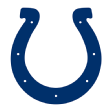 Indianapolis Colts
Indianapolis ColtsBiggest need: CornerbackIndianapolis fielded the worst pass defense in the league by DVOA in 2017. The Colts' best cornerback was Rashaan Melvin, who departed for Oakland in free agency, and they have yet to add one to replace him. Their projected top starter is 2017 second-round pick Quincy Wilson, who struggled to get on the field under Chuck Pagano. It is hard to see how Indianapolis will not again field one of the league's worst pass defenses.Quiet need: Wide receiverT.Y. Hilton was the only Colts receiver who had more than 26 catches last year, and the player with those 26 catches is now in Jacksonville (Donte Moncrief). Indianapolis added Ryan Grant after the Ravens bailed on him, but that just offsets the loss of a body from an inadequate position group. GM Chris Ballard's lack of activity in the wide receiver department may be more confusing than his inactivity elsewhere.Not a need: QuarterbackThe best news for Colts fans this offseason might have been Ballard's trade down with the Jets; not just for the immensely valuable second-round picks, but as a definitive sign that Indianapolis was not interested in drafting a quarterback of their own. Andrew Luck was seventh in the league in QBR when mostly healthy in 2016, and Jacoby Brissett showed last season that he is a perfectly competent backup.
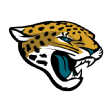 Jacksonville Jaguars
Jacksonville JaguarsBiggest need: Offensive playmakerThe Jaguars had decisions to make at receiver this offseason, so Allen Robinson is now in Chicago and Allen Hurns in Dallas while only Marqise Lee remains in Duval from the trio of 2014 rookies. That creates opportunity for Donte Moncrief to demonstrate the form he only flashed in Indianapolis. There's also an opportunity for young players Keelan Cole and Dede Westbrook, both unimpressive by DVOA as rookies. But there's also space here for an impact rookie, either a playmaking wide receiver or a tight end with more of a future than short-term addition Austin Seferian-Jenkins.Quiet need: QuarterbackQuarterback is never really a "quiet" need, so think of this as "low-impact." Picking late in the first round, the Jaguars are unlikely to find a 2018 upgrade on Blake Bortles, whose play largely determined how Jacksonville fared even with an upgraded defense. When Bortles posted an above-average passing DVOA in the first quarter, Jacksonville was 10-1. When he was below average, they were 0-5. You can only manage a quarterback so much, and Jacksonville should look for an upgrade sooner rather than later.Not a need: CornerbackThe Jaguars had the best defense and the best pass defense in the NFL last year, as A.J. Bouye and Jalen Ramsey combined to allow opponents' top two receivers fewer yards than any other team in the league. D.J. Hayden replaces Aaron Colvin in the slot.
 Tennessee Titans
Tennessee TitansBiggest need: Outside linebackerDerrick Morgan and Brian Orakpo are both older and set to be free agents in 2019, while second-round pick Kevin Dodd has lived down to his miserable SackSEER rating (our college-to-pro edge rusher projection system) in two injury-plagued seasons. Tennessee posted a virtually identical pass defense DVOA in 2016 as in 2017 despite last offseason's three high-profile secondary additions, so adding to the pass rush will be the priority at the 2018 draft.Quiet need: Wide receiverIt is hard to see the Titans spending much draft capital at receiver after spending the fifth pick and trading up in the third round to select receivers last year, but they do have a need at the position. They're likely to play more three-receiver sets, because Mike Mularkey played so few of them, and have yet to add someone to replace Eric Decker.Not a need: QuarterbackMarcus Mariota is locked in as the starter. At backup, if Blaine Gabbert were a great player, Arizona would have kept him rather than paying Sam Bradford $20 million. But he is still definitely an upgrade on Matt Cassel, who had the worst passing DVOA of any quarterback with at least 50 plays since Max Hall's miserable stint with the 2010 Cardinals.
AFC West
By Derrik Klassen
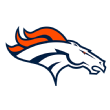 Denver Broncos
Denver BroncosBiggest need: CornerbackThe departure of Aqib Talib has altered the identity of Denver's secondary. In years past, Talib could lock down one side of the field or a specific target, allowing the rest of the secondary to play around him. The previous construct was especially ideal for Chris Harris Jr., who primarily played the nickel position. With Talib gone, Harris will likely step into more of an outside cornerback position. On top of Harris' role potentially changing, the quality of depth behind Harris and Bradley Roby is subpar. The Broncos need to reinvest in their secondary and get back to the construct that won them a Super Bowl a few seasons ago.Quiet need: QuarterbackIf money is any indication, Case Keenum is not Denver's long-term plan at quarterback. Keenum signed a two-year, $36 million deal this offseason, and will be the presumptive starter heading into the season, but Denver ought to think about grooming someone behind him. Though 2016 first-round pick Paxton Lynch is already on the roster, he has shown little promise, and should not deter the Broncos from looking for a new future at quarterback.Not a need: Offensive lineDenver has invested in its offensive line during the past couple of offseasons. During the 2017 offseason, the Broncos spent a first-round pick on left tackle Garrett Bolles and signed Ronald Leary, a former Cowboy, to a four-year, $36 million contract. The additions continued this offseason with the acquisition of right tackle Jared Veldheer via a trade with the Arizona Cardinals. With the handful of recent investments to accentuate Matt Paradis at center, Denver's offensive line is in good hands moving forward, and does not have much room to be improved upon without overinvesting.
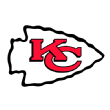 Kansas City Chiefs
Kansas City ChiefsBiggest need: CornerbackChange is not always positive. Earlier this offseason, the Chiefs acquired Kendall Fuller via a trade with the Redskins and sent Marcus Peters to the Rams in a separate move. Additionally, the two cornerbacks who played opposite of Peters -- Terrance Mitchell and Phillip Gaines -- are no longer on the team. Free agent David Amerson was added to fill in opposite Fuller. Aside from nickel cornerback Steven Nelson, Kansas City's cornerback group looks entirely revamped, but without any clear upgrades. Fuller is not the caliber of player Peters is, while Amerson is likely a wash compared to Mitchell and Gaines. More change should be on the horizon for the Chiefs' secondary.Quiet need: Front sevenKansas City's front seven is as lopsided as a unit can be. Justin Houston is an All-Pro caliber edge player and Chris Jones is an explosive young defensive tackle, but the unit around those two is poor. The interior defensive line group, Jones excluded, is a collection of depth players who will be forced into starting roles. Likewise, the off-ball linebacker tandem of Anthony Hitchens and Reggie Ragland does not inspire confidence. Both are low-priority castoffs from their former teams, and have limited skill sets. Even Dee Ford, now the team's No.2 pass-rusher, maxes out as an average player for the role he will play.Not a need: Skill position talentPatrick Mahomes will have an abundance of talent at his disposal as he steps into the starting quarterback role. Providing support from the backfield, Kareem Hunt led the NFL in rushing yards as a rookie last season, and looked to have the makings of a star running back moving forward. Wide receivers Tyreek Hill and Sammy Watkins present a unique, two-headed speed threat. Both players are excellent deep options, as well as underneath pass-catchers who excel with the ball in their hands. If three star teammates were not already enough, Mahomes also will have tight end Travis Kelce roaming the middle of the field and terrorizing defenses. The Chiefs can take a break on acquiring skill position talent and look to build elsewhere.
 Los Angeles Chargers
Los Angeles ChargersBiggest need: LinebackerThrowing Band-Aid solutions at the linebacker position cannot continue any longer. Since 2014, the Chargers have spent one top-100 pick on a linebacker, and have not signed any major free agents at the position. Denzel Perryman has been the team's only real investment at the position. Perryman, though talented and productive when able to play, has struggled to remain healthy to this point in his career. There must be a more concentrated effort to add a better linebacker next to Perryman, as well as better depth behind him.Quiet need: Edge rusher depthJoey Bosa and Melvin Ingram are as dominant a pass-rushing duo as any in football right now. In 2017, the pair combined for 23 sacks and regularly put pressure on opposing quarterbacks, making life easier on the secondary. When either of those two are not on the field, however, the Chargers lose a significant amount of pass-rushing threat. Adding another edge rusher who can come off the bench would be of great benefit to the Chargers, especially considering it would more comfortably allow Bosa to slide inside on obvious passing downs.Not a need: ReceiversBarring a wave of injuries (something the Chargers have sadly become accustomed to), the team's pass-catching corps should prove versatile, dynamic and deep. Keenan Allen, when healthy, is one of the smoothest route runners in the NFL, and has the after-the-catch ability to capitalize. With a possession receiver in Mike Williams and two speedsters in Travis Benjamin and Tyrell Williams, the remainder of the receiver group should give head coach Anthony Lynn the tools to stress defenses however he wants. As the cherry on top, tight end Hunter Henry has blossomed into a good receiving threat, particularly in the red zone. Philip Rivers is well-equipped to make a playoff run with this group of pass-catchers.
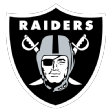 Oakland Raiders
Oakland RaidersBiggest need: Pass-rusherOakland finished with the fifth-worst pressure rate in the league last season, according to Sports Info Solutions charting. Edge rusher Khalil Mack is a perennial All-Pro, but he cannot be a one-man show. Regardless of whether Bruce Irvin becomes a full-time pass-rusher again, the Raiders need to add talent on the edge, and give Mack more assistance in getting to the opposing quarterback. Having just one pass-rusher to rely on is a poor recipe for any defense, much less a Raiders defense still trying to rebuild the linebacker corps and secondary.Quiet need: ReceiversSwapping out Michael Crabtree for Jordy Nelson was a questionable move, at best. Nelson's yards-per-reception rate plummeted to 9.1 yards in 2017, down from a 14.8-yard career average prior to 2017. Unless he has an unexpected comeback season, he is a downgrade from Crabtree. Amari Cooper is also coming off a rough season littered with drop issues. Cooper's uncertainty and the downgrade to Nelson are accentuated by the lack of depth at wide receiver, along with the ever-middling Jared Cook as the starting tight end.Not a need: Offensive lineThe Falcons and Cowboys are the only teams with more money invested in their offensive lines than the Raiders. Guards Kelechi Osemele and Gabe Jackson are each making just over $10 million next season, while center Rodney Hudson and left tackle Donald Penn are set to make roughly $8.5 million apiece. All four players are, at least, adequate at their positions, and have no business being replaced right now. Right tackle is the lone position left up in the air, but with as much money as the team already has invested in the position group, it is tough to imagine a scenario where the Raiders burn a high draft pick on a right tackle.

